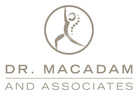Deep Tissue
Deep tissue massage is designed to relieve severe tension in the muscle and the connective tissue or fascia. This type of massage focuses on the muscles located below the surface of the top muscles. Deep tissue massage is often recommended for individuals who experience consistent pain, are involved in heavy physical activity (such as athletes), and patients who have sustained physical injury. It is not uncommon for receivers of deep tissue massage to have their pain replaced with a new muscle ache for a day or two. Deep tissue work varies greatly.
The term "deep tissue" is often misused to identify a massage that is performed with sustained deep pressure. Deep tissue massage is a separate category of massage therapy, used to treat particular muscular-skeletal disorders and complaints and employs a dedicated set of techniques and strokes to achieve a measure of relief. It should not be confused with "deep pressure" massage, which is one that is performed with sustained strong, occasionally intense pressure throughout an entire full-body session, and that is not performed to address a specific complaint. Deep tissue massage is applied to both the superficial and deep layers of muscles, fascia, and other structures. The sessions are often quite intense as a result of the deliberate, focused work. When a client asks for a massage and uses the term "deep tissue", more often than not he or she is seeking to receive a full-body session with sustained deep pressure throughout. If a practitioner employs deep tissue techniques on the entire body in one session, it would be next to impossible to perform; it might lead to injury or localized muscle and nerve trauma, thereby rendering the session counterproductive.
The term "deep tissue" is often misused to identify a massage that is performed with sustained deep pressure. Deep tissue massage is a separate category of massage therapy, used to treat particular muscular-skeletal disorders and complaints and employs a dedicated set of techniques and strokes to achieve a measure of relief. It should not be confused with "deep pressure" massage, which is one that is performed with sustained strong, occasionally intense pressure throughout an entire full-body session, and that is not performed to address a specific complaint. Deep tissue massage is applied to both the superficial and deep layers of muscles, fascia, and other structures. The sessions are often quite intense as a result of the deliberate, focused work. When a client asks for a massage and uses the term "deep tissue", more often than not he or she is seeking to receive a full-body session with sustained deep pressure throughout. If a practitioner employs deep tissue techniques on the entire body in one session, it would be next to impossible to perform; it might lead to injury or localized muscle and nerve trauma, thereby rendering the session counterproductive.
Therapeutic Massage
Therapeutic massages are designed for clients that have specific complaints or symptoms. A first time client may spend extra time at their session to complete a very thorough intake form detailing current and past health complaints. This type of session may retain a large relaxation element to it but advanced techniques are likely to be used for pain and chronic health issues. A therapeutic or clinical massage practitioner will see a client very frequently for the first few weeks or months. This might weekly hour massages for a couple of months. Advanced techniques such as deep tissue massage is often used.
Relaxation Massage
A relaxation massage is a rather straightforward session using classic Swedish massage techniques. The massage therapist will use light to medium pressure, depending on the client's preference, and the intent of the session is to help the client relax.
Pregnancy Massage
Pregnancy massage therapy also called pre-natal massage is specifically tailored for the expectant mother's needs. Pregnancy massage has been found to reduce stress, decrease swelling in the arms and legs, and relieve aches and pains in muscles and joints. It's a popular complementary therapy during pregnancy for back pain, when choices for pain relief, such as medication, are often limited. Not only can massage be physically beneficial, but the human touch can be comforting and provide emotional support during pregnancy.
Sport Massage
Sport massage is applied through pre-event, post-event, and restoration/training massage that is used primarily on-site at an event or at the host or team health care clinic. Sport massage stimulates circulation, calms tension, and prepares the athlete for optimal performance while reducing the chances of injury. It helps in the recovery from training and competition. It focuses on the prevention of developing chronic injuries and aids in the healing process of current ones.
Cupping
Massage cupping is a modified version of "cupping therapy," which has been used extensively in Chinese medicine for several thousand years. By creating suction, massage cupping is used to drain excess fluids and toxins; stimulate the nervous system; increase circulation; and loosen adhesion's and muscle knots. The sensation of cupping is often characterized as deep warmth and tingling, long after the treatment has ended. The skin will redden with strong massage cupping, indicating that circulation has been brought to the surface. Application of liniments, analgesics, or essential oils immediately following a cupping treatment will aid absorption deep into the tissue. The increased local blood supply will nourish the muscles and skin and allow toxins to be carried away.
Site powered by Weebly. Managed by Stormweb Hosting
